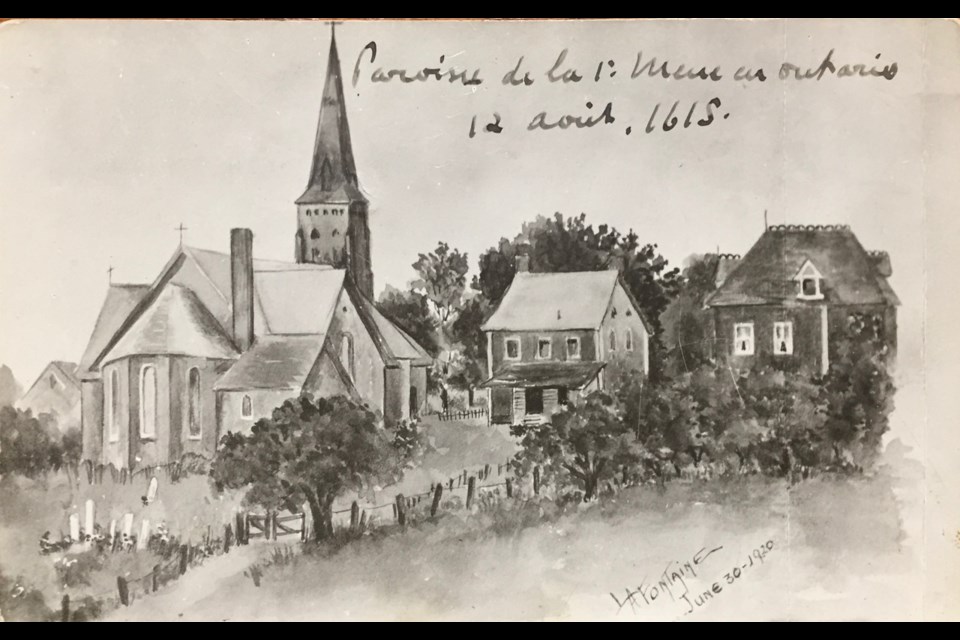A brief digression to Penetanguishene before we talk about Lafontaine.
Back in the day, if you wanted to have a drink and do some dancing, the Brulé and Commodore were the go-to places as Midland was dry.
If you were French, Irish or Catholic, or all three, this trinity meant you partied hard, but had the faith. Joie de vivre, the French called it. Leave the Baptists and low church types to fulminate against drink and advocate temperance.
For towns founded on lumber, shipping and the grain trades, many of the mill and shipyard workers were hard-working and hard-partying types.
Lafontaine, further up the Tiny peninsula, beyond the turn off for Baie de Tonnerre, was home to habitant and farmer from Champlain, Joliette, and, later, Vaudreuil and Soulange in Quebec who settled here in the 1850s. This was after Louis DesCheneaux settled a mile east of the hamlet in 1830 and Louis Labatte built his cabin in Thunder Beach in 1834.
To have “un café” with the priest one afternoon and to discuss the history of the first Mass in Ontario, the sanctity of the area, the Recollets, the Jesuits and the Beauty of Ste. Croix, is to be taken to another time and place. This author’s Belgian roots were felt as much of Mum’s side were Catholic.
A deeply Catholic community flourishes here. A drive beyond Penetang to see Ste. Croix in Lafontaine and, perhaps, the first mass in Ontario might be on your list.
Both the Commodore and Brulé are gone. The Methodists are now United and the Baptists don’t fulminate quite as much.
I ask only that a drive to Lafontaine will either restore your faith in the countryside or the miraculous.
Check out Wendy B’s for the tortière and take home some of Lafontaine’s best food if only the body needs feeding.
Leave the rest to God.
René Hackstetter May 27, 2021.



.jpeg;w=120;h=80;mode=crop)